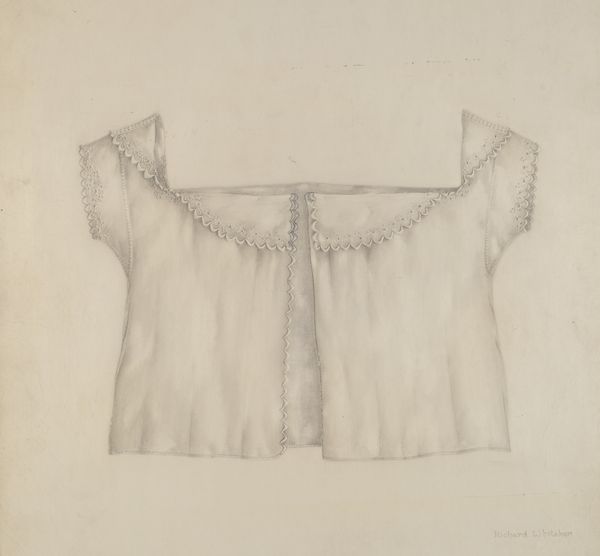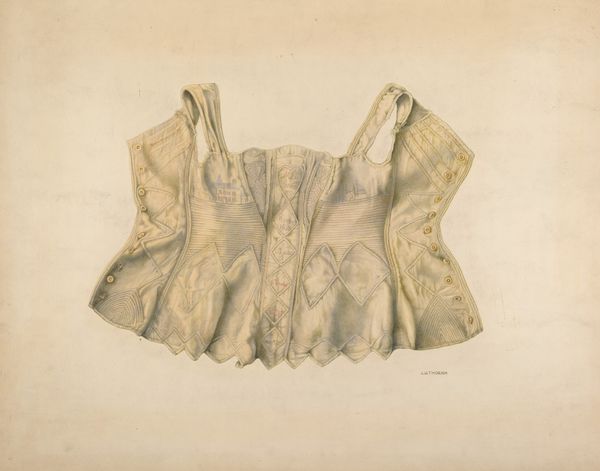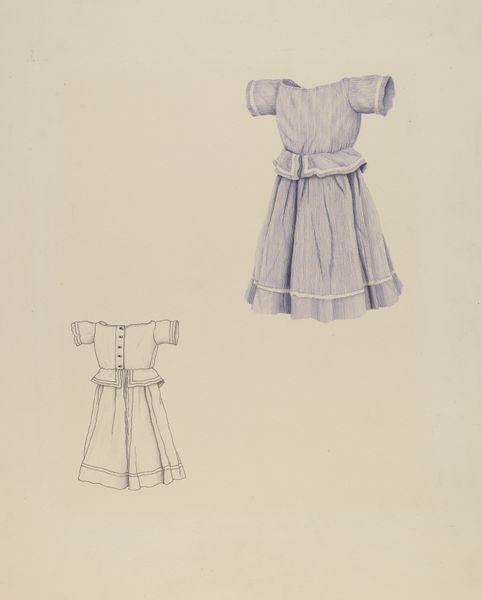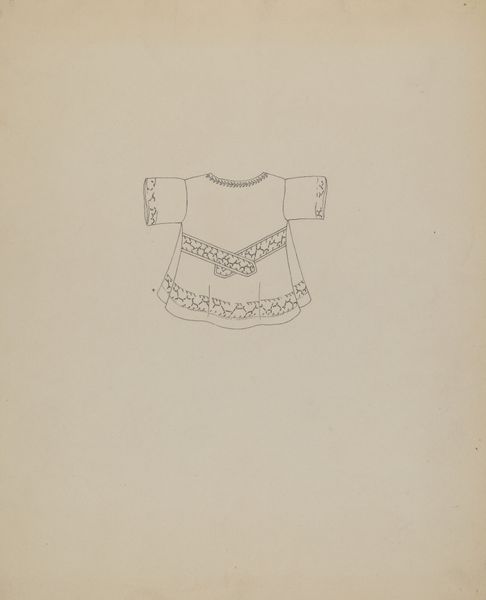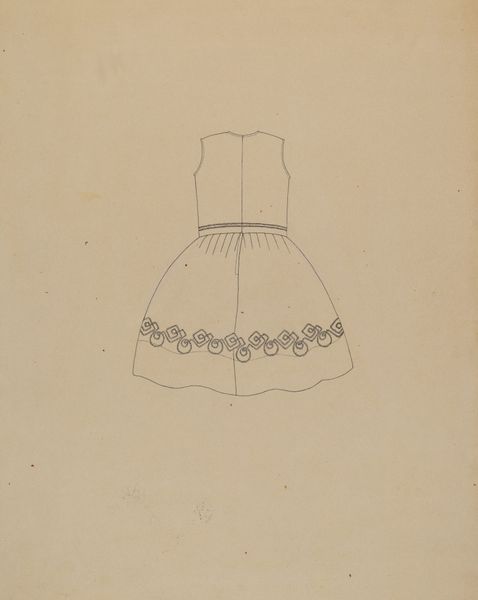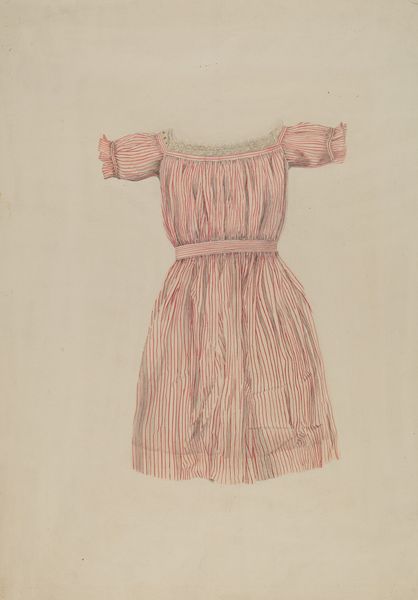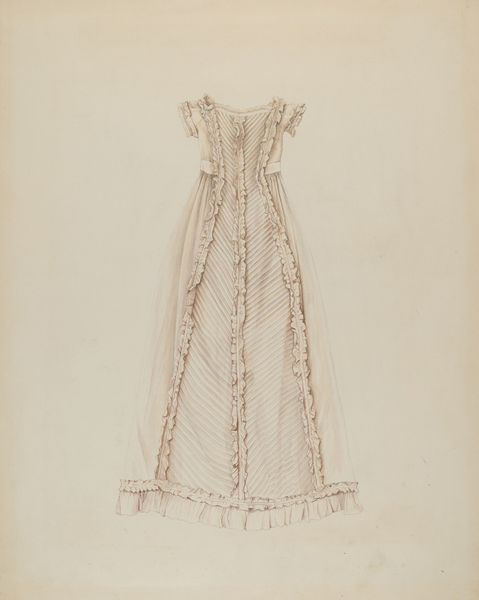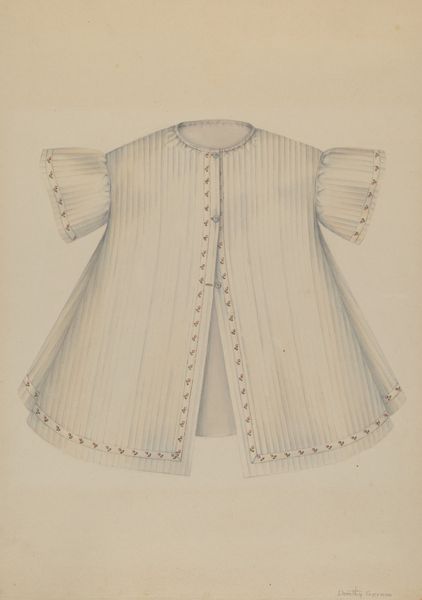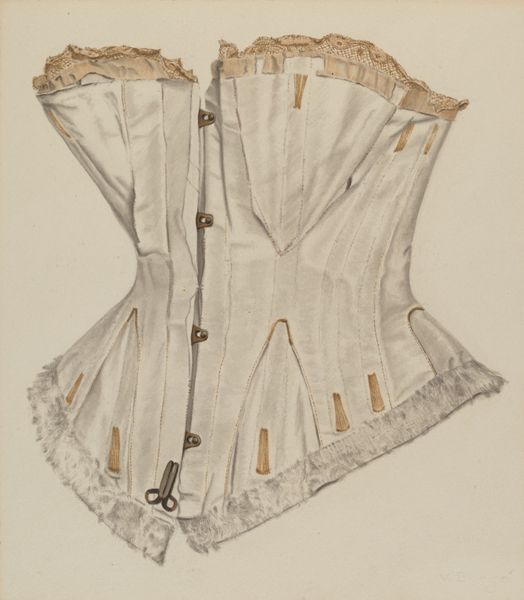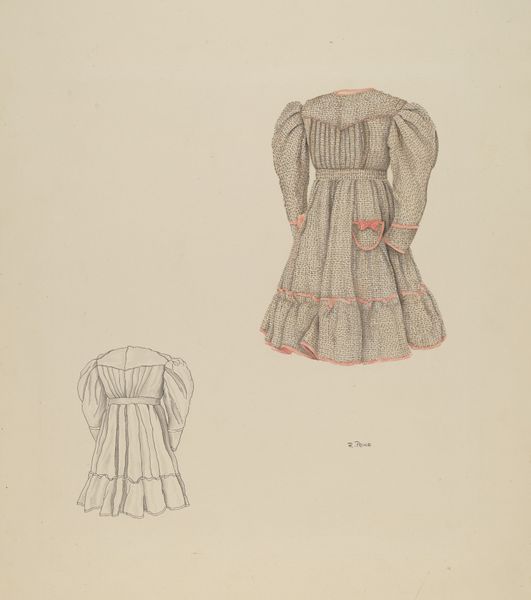
drawing
#
fashion design
#
drawing
#
underwear fashion design
#
pastel soft colours
#
fashion and textile design
#
historical fashion
#
traditional dress
#
textile design
#
fashion sketch
#
clothing design
#
bridal fashion
Dimensions: overall: 34.3 x 41.2 cm (13 1/2 x 16 1/4 in.)
Copyright: National Gallery of Art: CC0 1.0
Curator: Let’s turn our attention to Arelia Arbo’s “Baby’s Under-waists,” a drawing from around 1937. Editor: My immediate impression is of something delicate and understated, a world away from today’s bold childrenswear. They seem almost like miniature versions of bridal wear. Curator: Absolutely. Arbo was part of a network of female designers whose work, while often commercially driven, significantly shaped the visual landscape of everyday life in the interwar period. Fashion design was not just clothing; it was an expression of broader social changes, impacting ideas around gender, class, and aspiration. Editor: And look at the materials implied in this design - soft cotton, delicate lace. These are fabrics requiring specialized labor to produce, connecting this seemingly simple garment to complex networks of textile production. We’re talking about women's work—from the factory floor to the home sewer adapting the design. Curator: Precisely. Consider how such designs also reinforced notions of domesticity and motherhood, subtly dictating women's roles in society through the very clothes they made for their children. Fashion functioned as a visual language for reinforcing expectations. Editor: There is something incredibly evocative about seeing the material possibilities laid out in sketch form, particularly knowing that someone poured over these details, choosing which lace trim to feature, or how the fabric should drape. The intention and labor are almost more palpable in a drawing, rather than the finished garment. Curator: True, a sketch also highlights the aspirational quality of design. The under-waists become emblems of middle-class comfort and care, promoted by advertising, available through mail order catalogues and local department stores across America. Editor: So, in essence, this modest drawing unpacks the intersection between material production, labor practices and even idealized motherhood of the 1930s? Curator: Precisely! It’s a reminder that even the most humble artifacts can offer insight into the complexities of our social and cultural history. Editor: It truly shifts your perception of everyday attire. You begin to see these garments, these designs as historical touchstones connecting us to people, practices and priorities of the past.
Comments
No comments
Be the first to comment and join the conversation on the ultimate creative platform.

